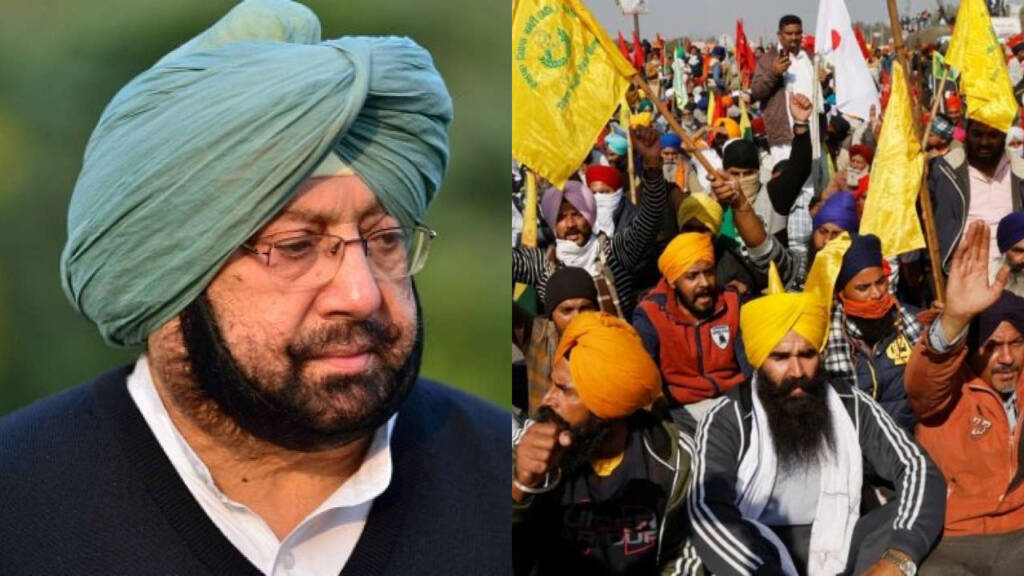The farmers of Punjab are on a vandalising spree. So far 1,300 towers have been destroyed by the farmers, resulting in disruption of telecommunication and Internet services in the state. The farmers’ protests and the vandalism by miscreants are costing the state dearly as the industrial houses based in Ludhiana and Jalandhar- two important industrial hubs of North India- are suffering heavily.
As per data from Punjab’s state department, the total loss of the industry as of November 20 was 30,000 crore rupees, and by now, it probably has crossed one lakh crore rupees. The blockade of inputs and outputs has become a major problem for the industries based in Punjab, Jammu & Kashmir, and Himachal Pradesh amid the farmers’ protests.
The farmers’ protests and their aggression in the last few weeks will drive the industrialists further away from the state, whose economy is already sinking. In the last few decades, the economy of Punjab has witnessed very little growth compared to Gujarat, MP, Tamil Nadu or even Haryana.
Until the 1990s, Punjab was miles ahead of other Indian states in terms of its per capita income, thanks to the ‘Green Revolution’ of the late 1960s. However, as India transformed from primarily agrarian economy to services and industry-based economy after the reforms of 1991, Punjab was left far behind.
As per the graph above by economists Shamika Ravi and Mudit Kapoor, the economic growth in Punjab in the last few decades has been so low that it has been left behind by many states in terms of per capita income. Today per capita income in Haryana is 1.5 times more than that of Punjab. Punjab is now far behind in all the three sectors- agriculture, industry, and services.
Agriculture:
In the last few weeks, there has been much talk about the agricultural growth of Bihar because the anti-reform apologists are arguing that the state abolished the APMC Act back in 2006 but it is still impoverished. This is the sturdiest argument one can ever digest because these data illiterate people do not know that Bihar’s agricultural growth in the last one and a half-decade has been around 8 per cent which is three times more than that of India’s average (3 per cent) and four times that of Punjab (2 per cent).
Industry:
While the other states are industrialising rapidly since the last few decades, Punjab has witnessed rapid de-industrialisation in the last one and a half-decade. Economist Shamika Ravi, in an article published in The Print, argued that industrial clusters in Punjab are witnessing closure.
“Manufacturing clusters of Jalandhar, Gurdaspur, Mandi Gobindgarh and Ludhiana have been struggling over time and reported lack of growth and rampant closures. One of the major reasons for this is the non-competitiveness of Punjab compared to other Indian states. Several states, including neighbouring Himachal Pradesh, Jammu and Kashmir, and Uttarakhand have improved their ease of doing business environment and offered incentives such as 100 per cent income tax and excise exemption, subsidised working capital loans, etc,” she wrote.
Services:
While every Indian state is luring IT service industries through IT parks and other incentives, the Punjab government has not taken a single measure to ensure the college graduates get employment in the state. Gurgaon, the city in Haryana, transformed itself from a village to services hub of North India, and Noida, a small industrial township that came into the 1980s, is today an industrial hub while Chandigarh, one of the most beautiful and well-maintained cities of the country, could not attract any major service sector player in the last few decades, thanks to the lethargy of Punjab government.
Punjab has India’s highest debt of GDP ratio in the country at around 40 per cent. Moreover, the state has one of the lowest expenditures on health and mortality rate from the recent COVID-19 pandemic is double to that of the national average. Even the percentage of youth suffering from mental health conditions in the state is as high as 18 per cent due to alcoholism and substance abuse.
The political economy of Punjab is sinking, the social services are in the dire state, industries are leaving, and the farmers of the state are busy vandalising the Jio towers (which will further drive off the industries from the state) instead of asking for reforms from the state government.
